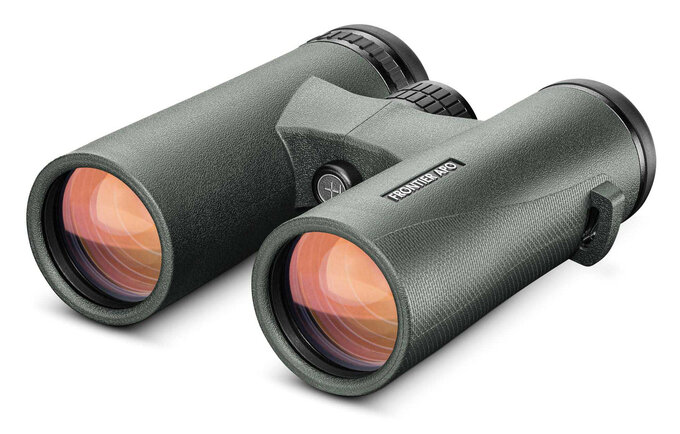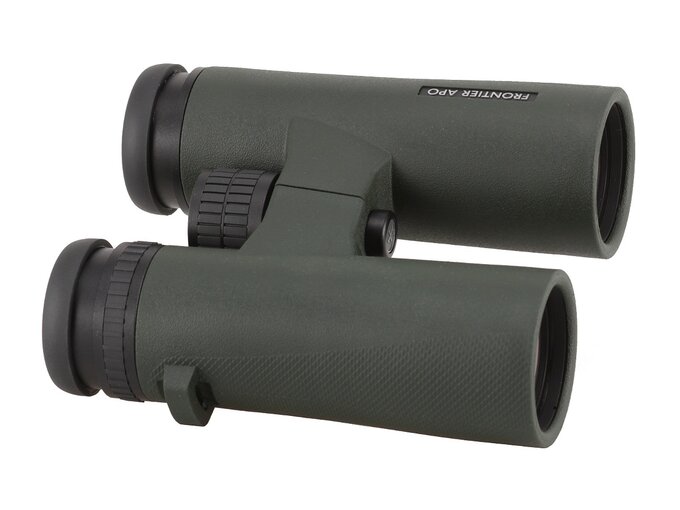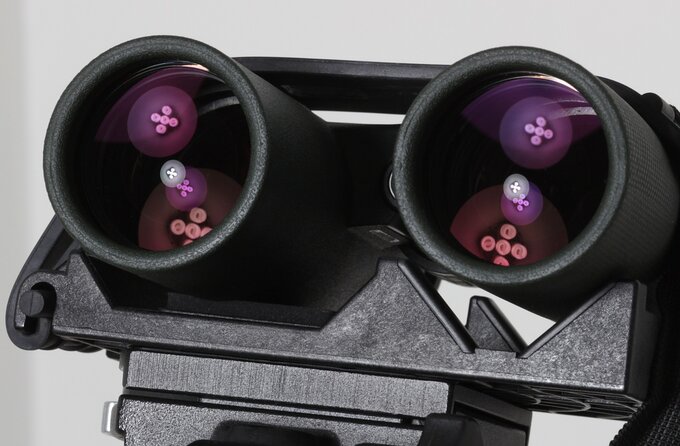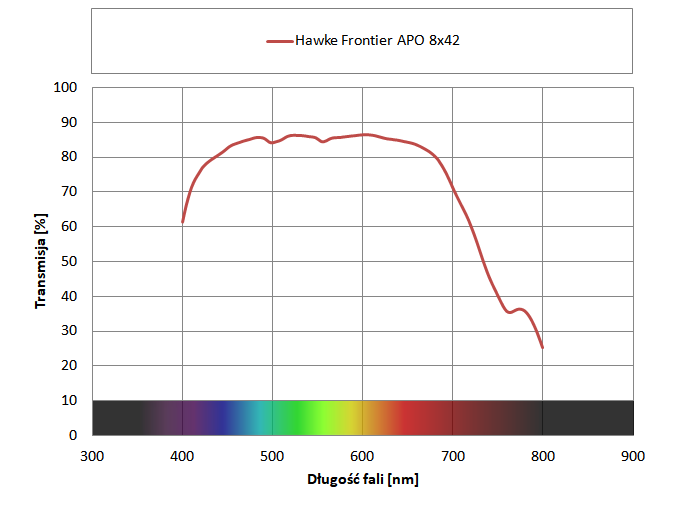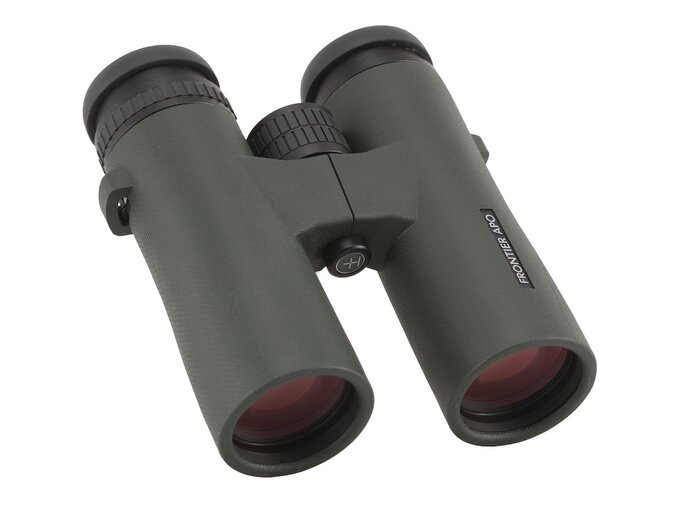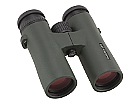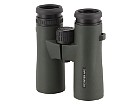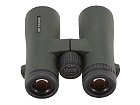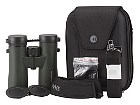| Real front lens diameter |
Left: 42.02+/-
0.05 mm
Right: 42.01+/-
0.05 mm
|
8 / 8.0 pkt |
| Real magnification |
7.93+/-
0.05x
|
3/3.0 |
| Transmission |
85.3+/-
1%
|
13/25.0 |
| Chromatic aberration |
Sensational level of correction. Invisible in the centre and very low on the edge. |
9.3/10.0 |
| Astigmatism |
Slight. |
7.5/10.0 |
| Distortion |
Distance of the first curved line from the field of view centre compared to the field of view radius: 95% ±3% |
10/10.0 |
| Coma |
Starts in a distance of 75-80% of the field of view radius and is medium on the very edge. |
8/10.0 |
| Blurring at the edge of the FOV |
Blur occurs in a distance of 76.5% +\- 3% from the field of view centre. |
4.5/10.0 |
| Darkening at the edge the FOV |
Noticeable. |
3/5.0 |
| Whiteness of the image |
Good. Quite flat transmission graph, slight loss of purple and blue light. |
4.3/5.0 |
| Collimation |
Perfect. |
5/5.0 |
| Internal reflections |
| Left: |
Right:
|
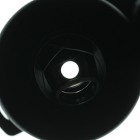 |
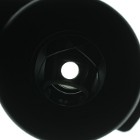 |
Noticeable „drop” and a brighter arc under the exit pupil. |
3/5.0 |
| Housing |
A solid, compact construction for the 42 mm class. Green rubber armour of high quality, slightly rough to improve your grip. Still, it sticks out noticeably near objectives. The binoculars are comfortable to hold and to look through, with rubberized eyecups with four detention stops. Produced in China. |
7.5/8.0 |
| Focusing |
Significant, slightly ribbed central wheel that moves smoothly but is not especially well damped. Running through the whole distance range needs a turn through an angle of 330 deg. Movable, ribbed dioptre correction ring on the right eyepiece. It moves the outer element. |
4.5/5.0 |
| Tripod |
Quite comfortable access. |
3/3.0 |
| Interpupilary distance |
from 57.8 to 78.1mm
|
5/6.0 |
| Closest focusing distance |
1.65 meters. |
2/2.0 |
| Eyepieces FOV |
Apparent field of view of 63.6 deg (simplified formula) and 58.1 deg (tangent formula). |
13/20.0 |
| Field of view |
Measured by us amounted to 8.02 +\- 0.04 degrees and was slightly narrower than stated in the specifications. A quite wide field for this class of equipment. |
7/8.0 |
| Quality of the interior of the barrels |
Inner tubes are dark gray, matted, and ribbed. The bottom is gray. A noticeable number of specks of dust. |
3.5/5.0 |
| Vignetting |
| Left: |
Right:
|
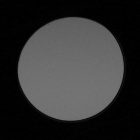 |
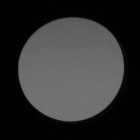 |
OL: 3.20%, OR: 4.09% |
3.5/8.0 |
| Prisms quality |
High quality BaK-4 glass. |
8/8.0 |
| Antireflection coatings |
Pink-green-blue on objective lenses, yellow-green on the prisms, purple-yellow-green on eyepieces. Low intensity. |
5/5.0 |
| Warranty [years] |
10 |
4.5/6.0 |
| Final result |
76.4%
|
145.1 / 190 pkt
|
| Econo result |
|
0pkt. |
Summary
Pros:
- very solid and quite ascetic casing,
- wide field of view,
- slight astigmatism,
- sensational correction of chromatic aberration,
- very low coma,
- negligible distortion,
- good white balance,
- high quality BaK-4 prisms with dielectric coatings,
- high quality antireflection coatings,
- sharp images already from 1.65 metres.
Cons:
- too low transmission at this price point,
- truncated exit pupils.
When I find a pair of binoculars of a slightly less acclaimed producer with good parameters, priced at around 1000 USD, I always hope it might be another market hit. After all for such an amount of money you can produce a really good piece of equipment and a less renowned producer doesn't have to add an extra amount of money just because their product belongs to a well-known make or has a 'Made in Germany' badge. Mind you, the majority of customers know that most probably that product was just put into the box in Germany, the rest of production has been done elsewhere.
Small wonder that, as soon as I spotted the Frontier APO models in the Hawke Optics line-up, featured by their Polish distributor, Kolba.pl and priced about 3500 PLN, I immediately wanted to test it and take a reality check.

Hawke Frontier APO 8x42 and Vortex Razor HD 8x42. |
I was sent the 8x42 binoculars that, according to official specifications, is supposed to feature a very good field of view, amounting to 8.1 deg., that was reached with a very comfortable eye relief distance, amounting to 18 mm. The binoculars are supposed to be a Schmidt-Pechan construction, with dielectric coatings on the reflecting surface of the elements. As if it wasn't enough, there are APO letters in the name so the producers tempt us with a promise that there is low dispersion glass inside the system, guaranteeing very good correction of chromatic aberration. Apart from that you get everything you can expect from high quality optics: antireflection multi coatings on all air-to-glass surfaces, hydrophobic coatins on outer elements, and a waterproof, nitrogen-purged casing made of magnesium composites.
Theoretically everything looks splendid – what about the reality check? Let's start from transmission as it shows very well the class of equipment you are dealing with.
One glance at a graph shown above and you know that there are no miracles. The average transmission value after the centre of the visible spectrum reaches 85%. That level is quite evenly kept from near 470 nm up to 630 nm, so for the most important part of the spectrum from our perspective. Still, you can notice a slight loss of blue and purple light so white balance is not perfect, with a slight yellow and orange overcast. What's more, in this class of equipment 85% of transmission is hardly enough – if you spend about 1000 USD and you read in official specifications about fancy coatings and layers you usually expect a value much closer to 90%.
The APO letters for a change aren't an exaggeration. The tested Hawke model corrects chromatic aberration in a sensational manner and it does so across its whole wide field of view. We haven't seen such a good result in this category for a very long time and if you are allergic to this particular aberration the Frontier APO will meet your expectations – and then some.
When it comes to other categories, the Frontier APO 8x42 presents sensible or even very good results. Exit pupils are the only exception – with such physical dimensions and weight of the binoculars it shouldn't have happened. Still, we don't have any objections concerning coma, astigmatism, or distortion correction. Of course you might wish that wide field of view was perfectly sharp to at least 80% of the field of view radius. Unfortunately, it is not the case, the result is medium at most.
It doesn't change the fact that the final result of the Hawke Frontier APO 8x42 remains very good indeed and deserves to be praised. Of course very strong competition from such models as the Vortex Razor HD 8x42, the Nikon Monarch HG 8x42, the Bushnell Forge 8x42, or the Zeiss Conquest HD 8x42 might be a problem. Still, you should mention the fact that only the Bushnell and the Nikon are equally sensibly priced, the Vortex and the Zeiss are distinctly more expensive. As always we are really pleased that at this price and quality point the competition is strong and its level is really high.
